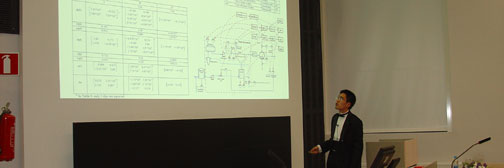| | Year 2006
Sami PenttiläDetermination of a research concept for materials testing under supercritical water conditions
Because of the growing use of high temperature aqueous systems as heat transport media in thermal power plants, the corrosion of metals and alloys in supercritical water has become a subject of great interest. Previous weight loss / weight gain measurements in supercritical water conditions characterize the general corrosion behaviour, but the study of electrochemical phenomena, such as corrosion and the formation of the oxide film, can be carried out by using electrochemical techniques.
The goal of this work was to sketch a comprehensive concept for materials testing under supercritical water conditions and to carry out a series of experiments in those conditions (T = 500 – 700 °C, p = 300 bar and DO2 = 0 – 3,5 ppm).
In the literature survey the supercritical water conditions were studied. For the range of candidate materials proposed for the supercritical water reactor, few studies of corrosion in supercritical water have been reported. At present, no candidate alloy has been confirmed for use as either the cladding or structural material in SCWRs (Supercritical Water Reactor). According to literature survey the candidate materials for supercritical water reactor can be divided into three categories, which are austenitic stainless steels, ferritic-martensitic steels and Ni-based alloys.
For the purpose of materials testing at supercritical environment the supercritical-autoclave with the water circulation loop were used. SC-autoclave in-situ measurements and environmental parameters (conductivity and dissolved oxygen) were monitored on-line. The electrochemical methods used in this thesis were contact electric resistance (CER) and contact electric impedance (CEI) techniques. In addition weight gain measurements were used and a pneumatic servo-controlled materials testing device was designed to apply in to the SC-autoclave.
The properties of the formed oxide on AISI316L are similar in comparison with Fe in SCW (Supercritical Water). Thus the effect of Cr which dominates the behaviour of AISI316L at subcritical temperatures is not as clear in the SCW regime.
Deprecated: strlen(): Passing null to parameter #1 ($string) of type string is deprecated in C:\WWWroot\Root\incs\5_theses\theses_new2010.php on line 248
This info last modified 27 Apr 2024 by Jerri Kämpe-Hellenius
|

